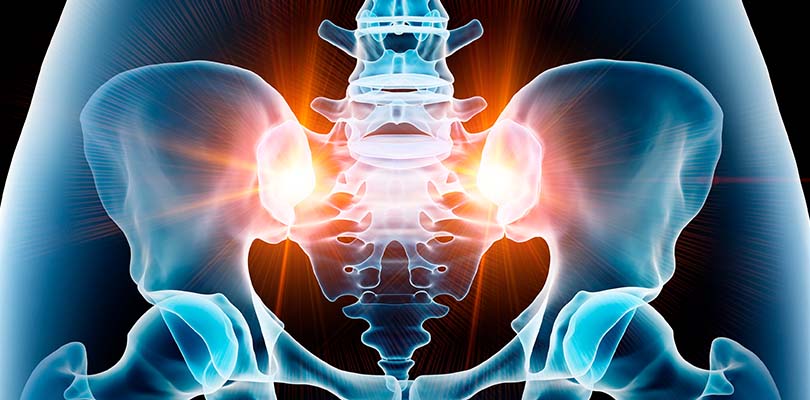Signs of Bone Cancer: Symptoms to Watch For
The adult human skeleton is made up of 206 bones, any of which are susceptible to bone cancer. There are several kinds of tumors that can grow in bones; growths may be benign bone cysts, non-cancerous tumors, or tumors that cause bone cancer. Here we cover the common signs of bone cancer.
What Do Bones Do?
Bones serve many functions including bodily support, organ protection, working with other body parts to generate movement, fat storage, creation of blood cells in the red bone marrow, and more. One property of bone tissue is its ability to regenerate as the new tissue replaces old tissue on an ongoing basis, so cells are constantly being created.
What Is Bone Cancer?
Bone cancer is a rare form of cancer making up less than 1% of all new cancers diagnosed. In bone cancer, bone or cartilage cells sometimes change and no longer grow or behave normally. When cells grow too quickly or mutated cells crowd out normal cells, it can result in cancer.
Bone cancer starts in the bone or cartilage, and while it can begin in any bone in the body, it commonly affects the pelvis or the long bones in the arms and legs. Bone cancer, or primary bone cancer, only includes cancers that start in the bone; it does not include cancer that has spread to the bones from another body part. Bone cancer is more common in children and young adults, but some types of bone cancer affect mostly adults.
Types of Bone Cancer
Bone cancers are broken down based on the type of cell where the cancer begins. Here are the most common types.
Osteosarcoma
This is the most common form of bone cancer that occurs in the osteoid tissue (immature bone tissue) and grows and spreads quickly to other areas of the body. With osteosarcoma, cancerous cells produce bone, generally in the bones of the arm or leg. This type of bone cancer occurs most often in children and young adults.
Chondrosarcoma
Chondrosarcoma is the second most common type of bone cancer that begins in the cartilage. With these tumors, cancerous cells produce cartilage, typically in the pelvis, legs, or arms. Chondrosarcoma mainly affects middle-aged or older adults and risk increases with age.
Ewing Sarcoma
Ewing sarcoma tumors usually occur in the bone, but in rare cases it can also arise in soft tissues such as muscle, fat, or blood vessels. These tumors are most commonly found in the pelvis, legs, or arms and generally affect children and young adults. Ewing sarcoma tumors have a tendency to grow and spread quickly to other parts of the body.
Chordoma
This form of bone cancer arises in the bones of the skull or spine, usually the base of the skull or the sacrum. Men are about twice as likely than women to be diagnosed with chordoma.
Early Signs of Bone Cancer
There are a few signs to look out for when it comes to discovering bone cancer early. Pain is the most common sign, so pay attention to unexplained aches and pains. The pain may not be constant, but it can flare up at night or when the bone is used. As bone cancer grows, the pain will become constant and only get worse with activity. Another early symptom is swelling where the tumor is located, so make sure to get any mysterious lumps looked at by a doctor.
A few other early signs may include:
- Joint swelling and stiffness which may be the result of a tumor located near or in the joint
- A lump in the back of the throat if there is cancer in the bones of the neck. The lump may make swallowing and breathing difficult.
- Numbness, tingling, or even weakness if cancer in the bones of the spine put pressure on nerves.
- Inexplicable weight loss and fatigue
Cancer of the liver can move slowly and go undetected for quite a while.
Bone Cancer Symptoms
Symptoms will largely depend on which bones are affected by cancer. Symptoms can include:
- Bone pain
- Swelling and tenderness near the affected area
- Weakened bone that breaks for no known reason
- Fatigue
- Unintended weight loss
- A lump in the arms, legs, chest, or pelvis
- Unexplained fever
- Limping with later stage bone cancer
Causes of Bone Cancer
The cause of most bone cancer is unknown, but there are some factors that may increase the risk of bone cancer. Research shows that some bone cancers are linked to hereditary factors or inherited genetic syndromes. Certain conditions, such as Paget’s disease of the bone, may also have an effect on bone cancer. Previous treatment with radiation therapy, chemotherapy, or stem cell transplantation may influence the growth of bone cancer.
Treatment Options for Bone Cancer
As with all cancer treatment, available options are based on the type of bone cancer being treated, the stage of the cancer and the health of the patient. For treatment, your doctor may recommend one or more of the following:
- Surgical removal of the tumor. This is the most common treatment where the surgeon goes in and removes the entire tumor.
- Chemotherapy. This uses anticancer drugs to kill cancer cells.
- Radiation therapy. This uses high-energy x-rays to kill cancer cells.
- Cryosurgery. This freezes and kills cancer cells with liquid nitrogen.
- Targeted therapy. This is the use of specially designed drugs which interact with a specific molecule of the cancer cells. This therapy can be used to stop the growth and spread of cancer cells.
Pay attention to your lumps, bumps, aches and pains, as they can be the first indication of bone cancer. If you cannot recall hurting yourself where you are feeling pain, take note, self-monitor, and involve your physician if required.







